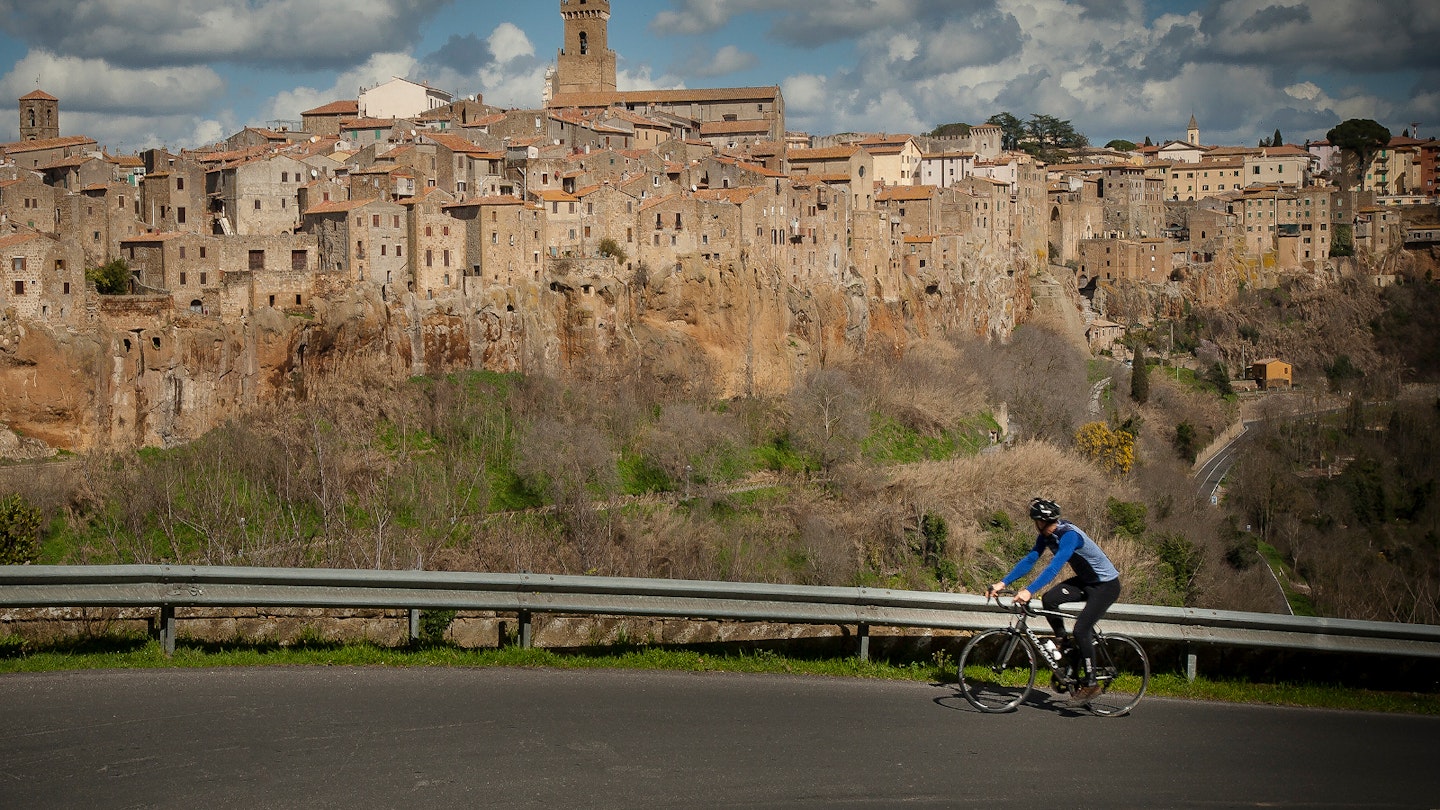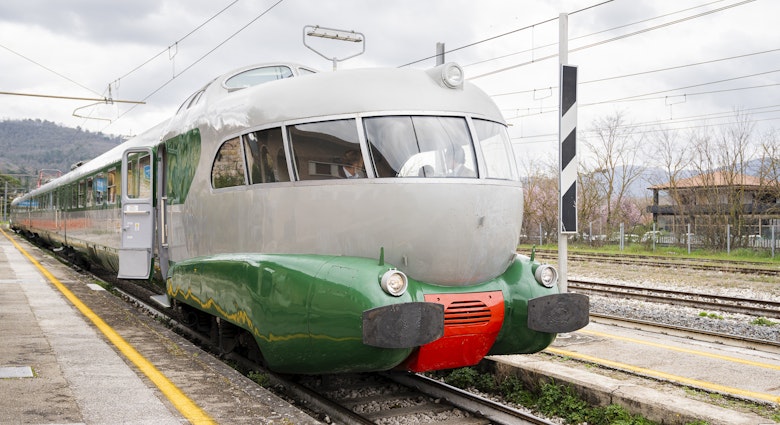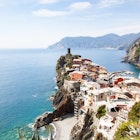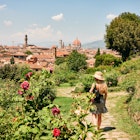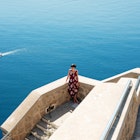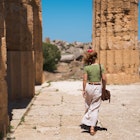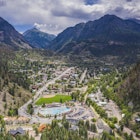A hardened place of rocky outcrops, marshes and undulating hills that abut a dramatic coastline of cliffs and long windswept beaches, the Province of Grosetto is far from most people’s vision of the quaint Tuscan countryside. But for those who love to cycle, it is a landscape of plenty.
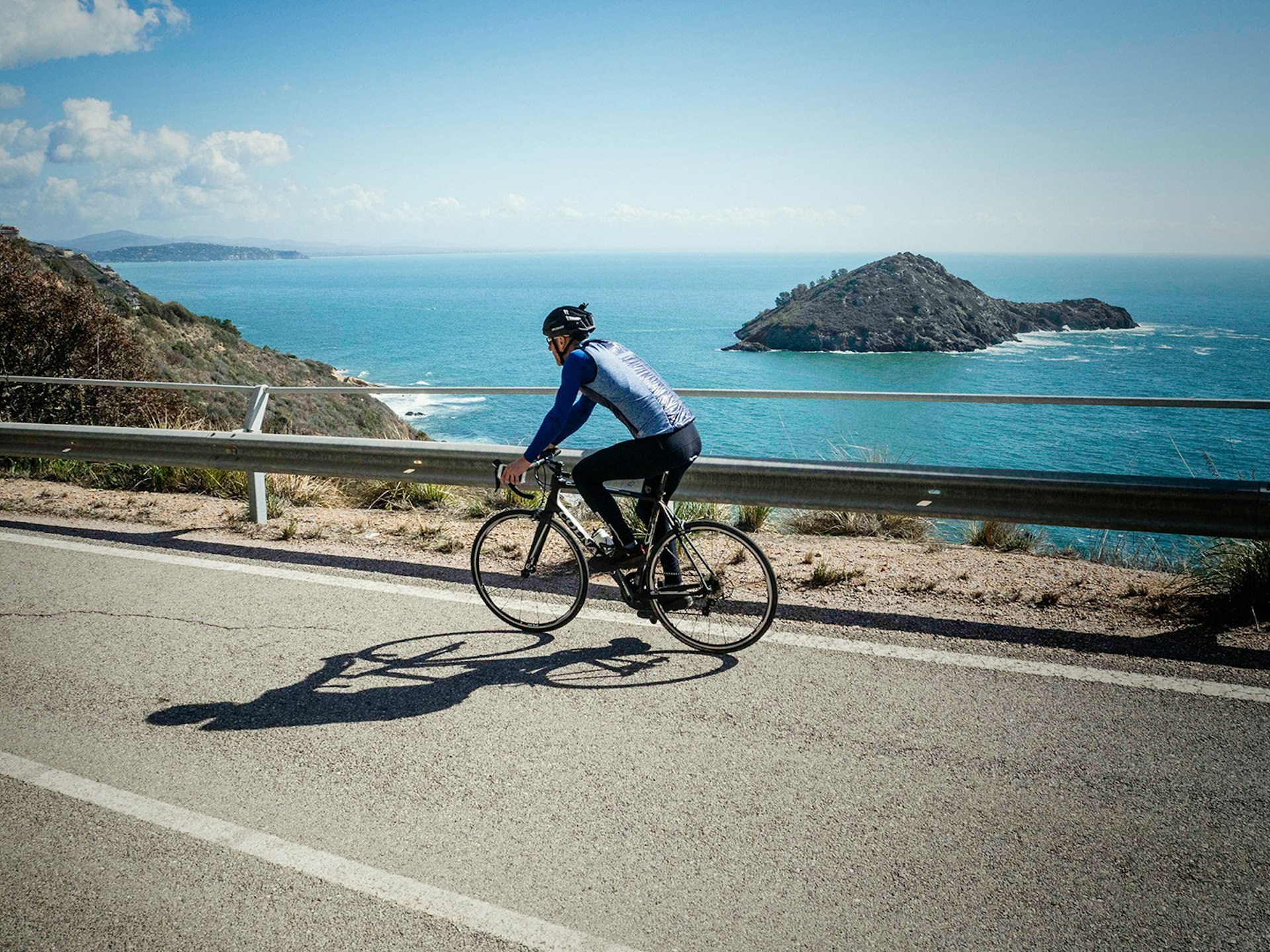
Little-trafficked roads and trails (Grosseto is one of the least densely populated areas of Italy) snake through its varied terrain, offering head-turning views, access to ancient sites and challenging climbs to historic hilltop towns whose beauty will vanquish any remaining breath. And come breakfast, lunch and dinner, your exploits in the saddle will only afford you a larger appetite to relish the famous cuisine of Tuscany. As they say, a meal earned tastes so much the sweeter – perhaps that's why so many come to the region for active holidays.
The weather in the area makes adventures on two wheels a very pleasant possibility from early March to late October. There are almost two-dozen set cycle routes through the region, but here are a couple of our favourites.
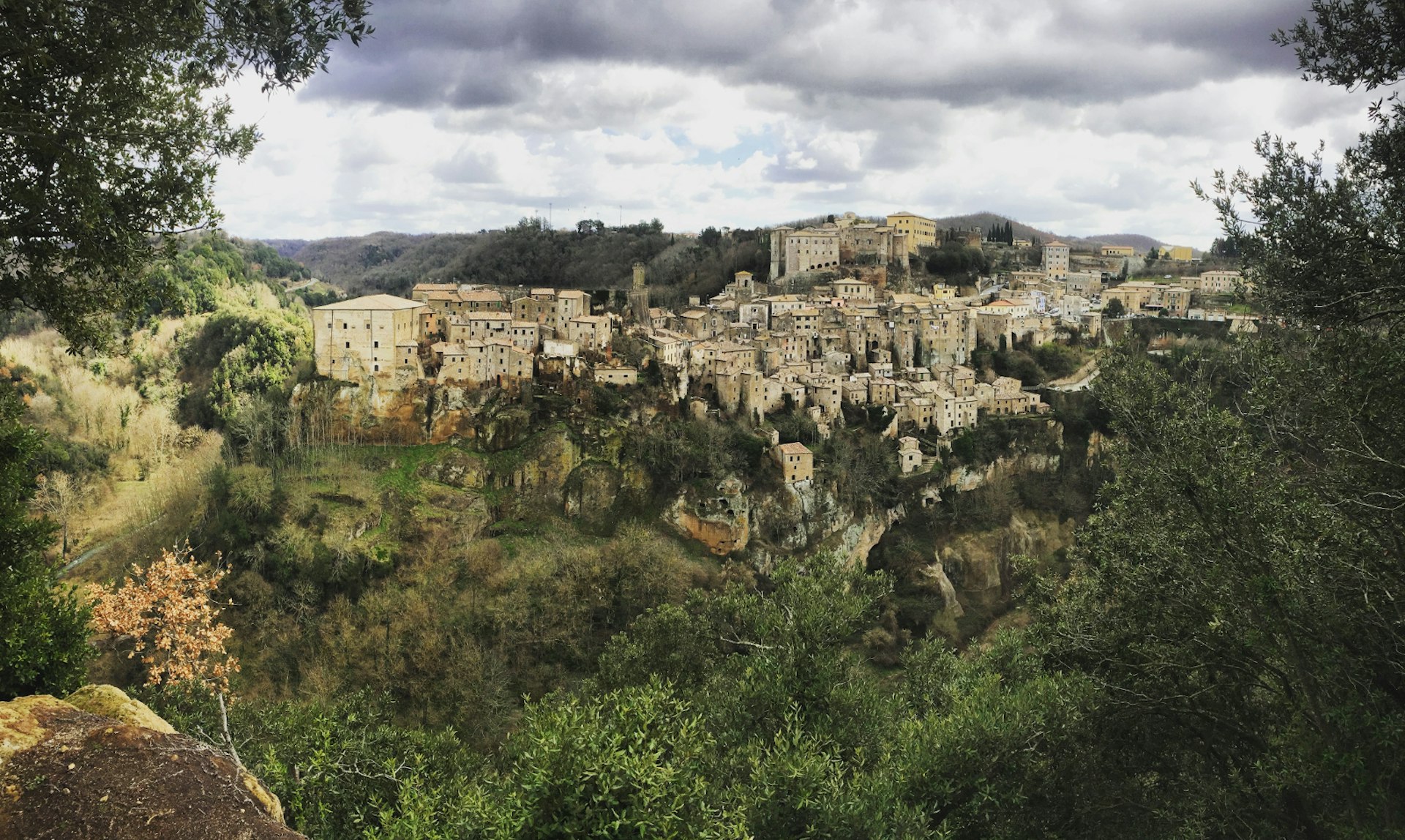
Città del Tufo: Sorano, Sovana & Pitigliano
This challenging 49km loop, with some 830m of elevation changes, winds its way through Città del Tufo and its three historic hilltop villages of Sorano, Sovana and Pitigliano. Along the way it takes in hot springs, ancient sunken roads and plenty of stunning vistas.
The route starts some 3km south of Sorano at a thermal spring that has attracted visitors since the Middle Ages. As you head north the immediate area around Sorano offers some incredible views of the town and its steep fortifications; one of the best, found at the back of the grounds of the Chiesa di San Rocco (an old Catholic church), is a slight detour west of town along the SP22. Once you’ve enjoyed Sorano itself, and perhaps downed your first espresso of the day, hop back on the bike and pedal north towards Montorio to see its castle, which was first constructed in the 12th-century by the Aldobrandeschi noble family. From there aim your handlebars south to cycle through the diminutive and charming villages of Castell’Ottieri, Elmo and Grotte Cavalieri. En route you’ll get to absorb some panoramic vistas of the valley.
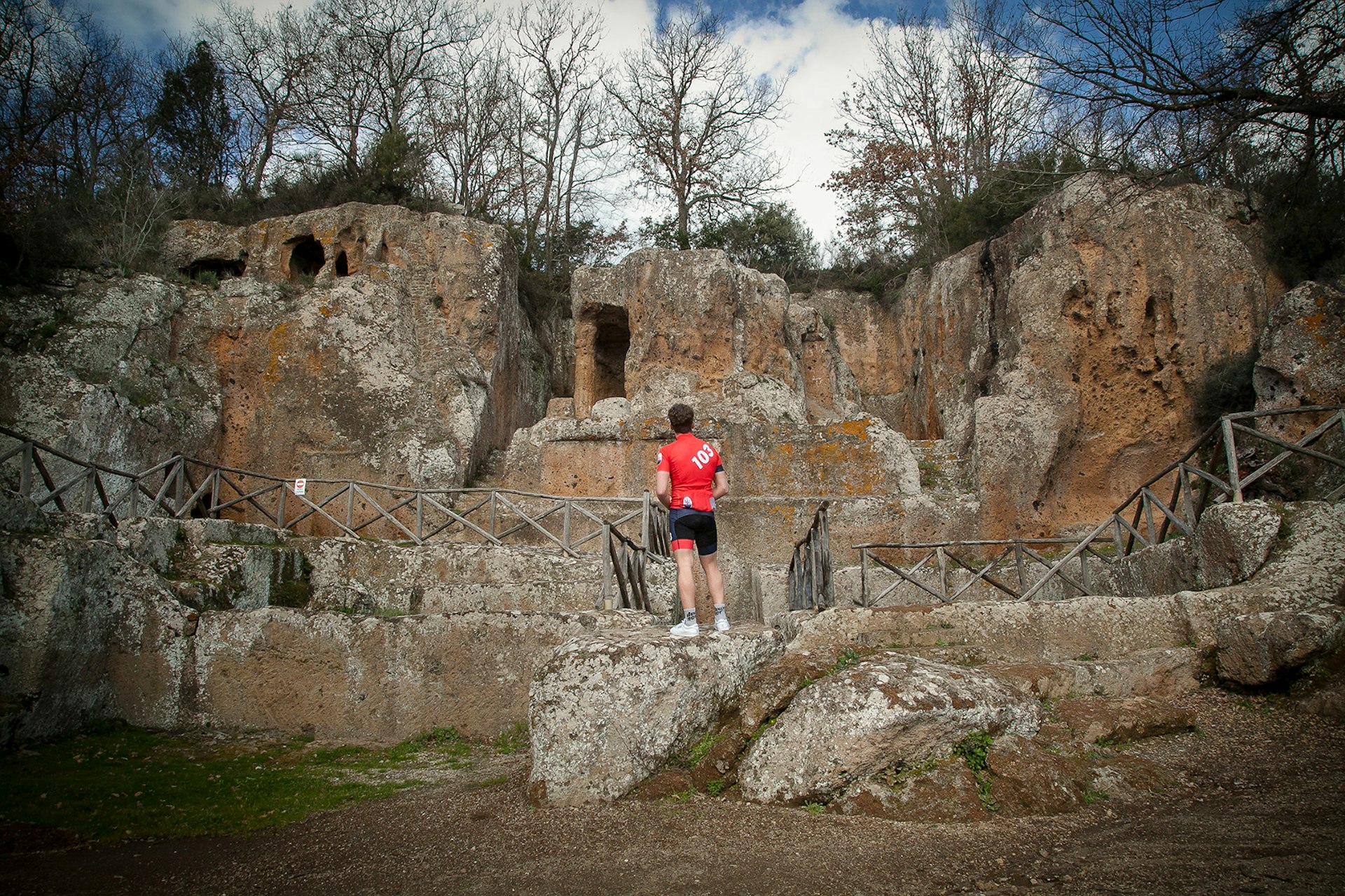
Shortly after joining the SP22 and pedalling east towards Sovana, it’s worth stopping to explore one of the region’s archaeological treasures: Parco Archeologico Città del Tufo. Here you can walk or cycle (if you’re riding a mountain bike) through several steep vie cave (sunken roads) that were hewn out of the tufo rock in ancient times. These may have been part of a sacred route connecting Etruscan necropolises and other religious sites, or simply corridors for safely moving livestock and people in times of war. Also at the site is Tomba Ildebranda, a 2nd- or 3rd-century BC tomb carved into the rock that is considered to be one of the most important monuments in the region.
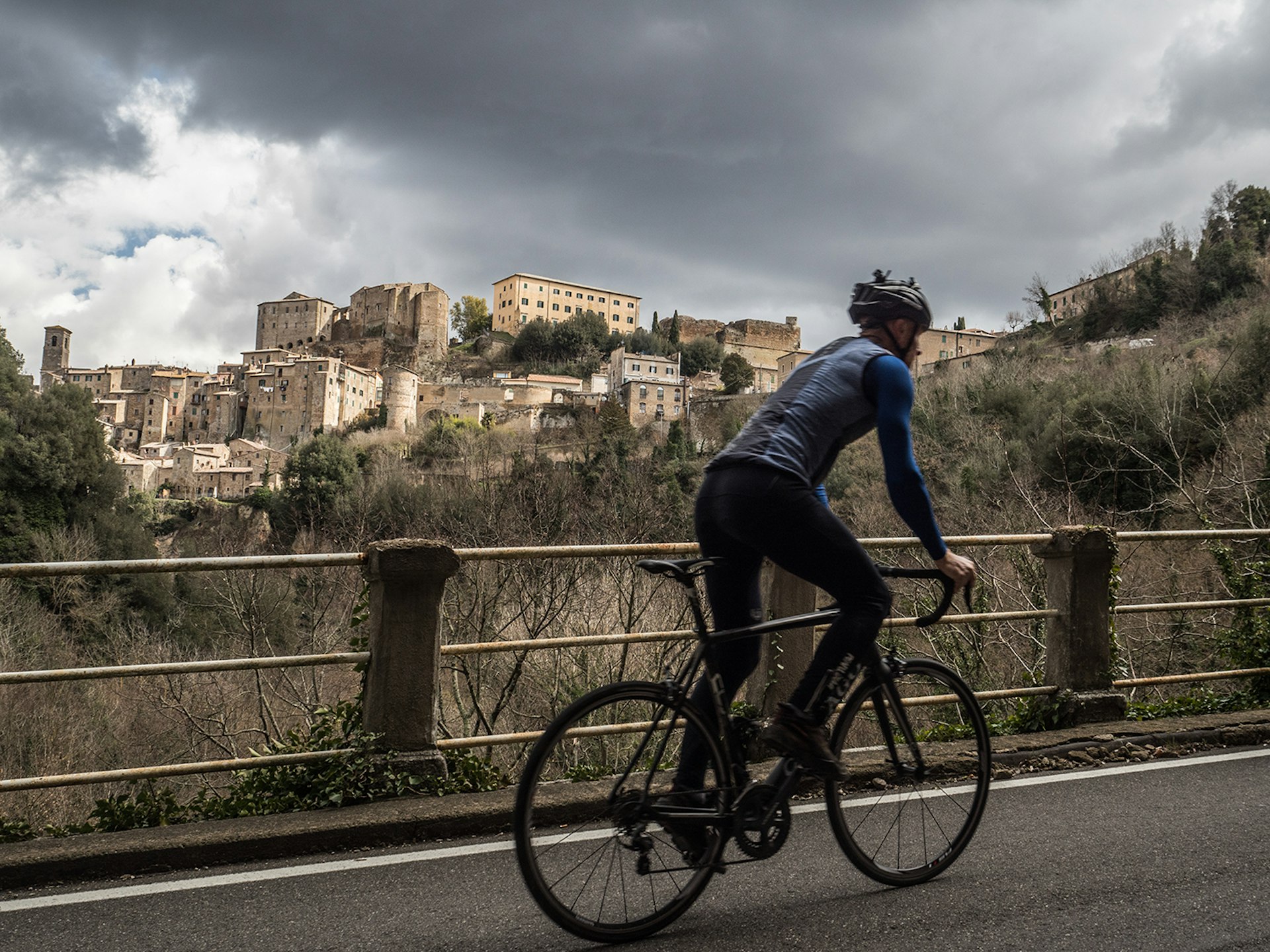
From the archaeological park it’s a short climb to the idyllic village of Sovana, with its herringbone-bricked main street that dates back to Roman times. Stop for a bite to eat or drink and to check out the pair of simplistic Romanesque churches: the Duomo and Santa Maria Maggiore. Descend east from here before turning south onto the SP46. The road continues to wind down until you approach the most stunning village of the day – Pitigliano.
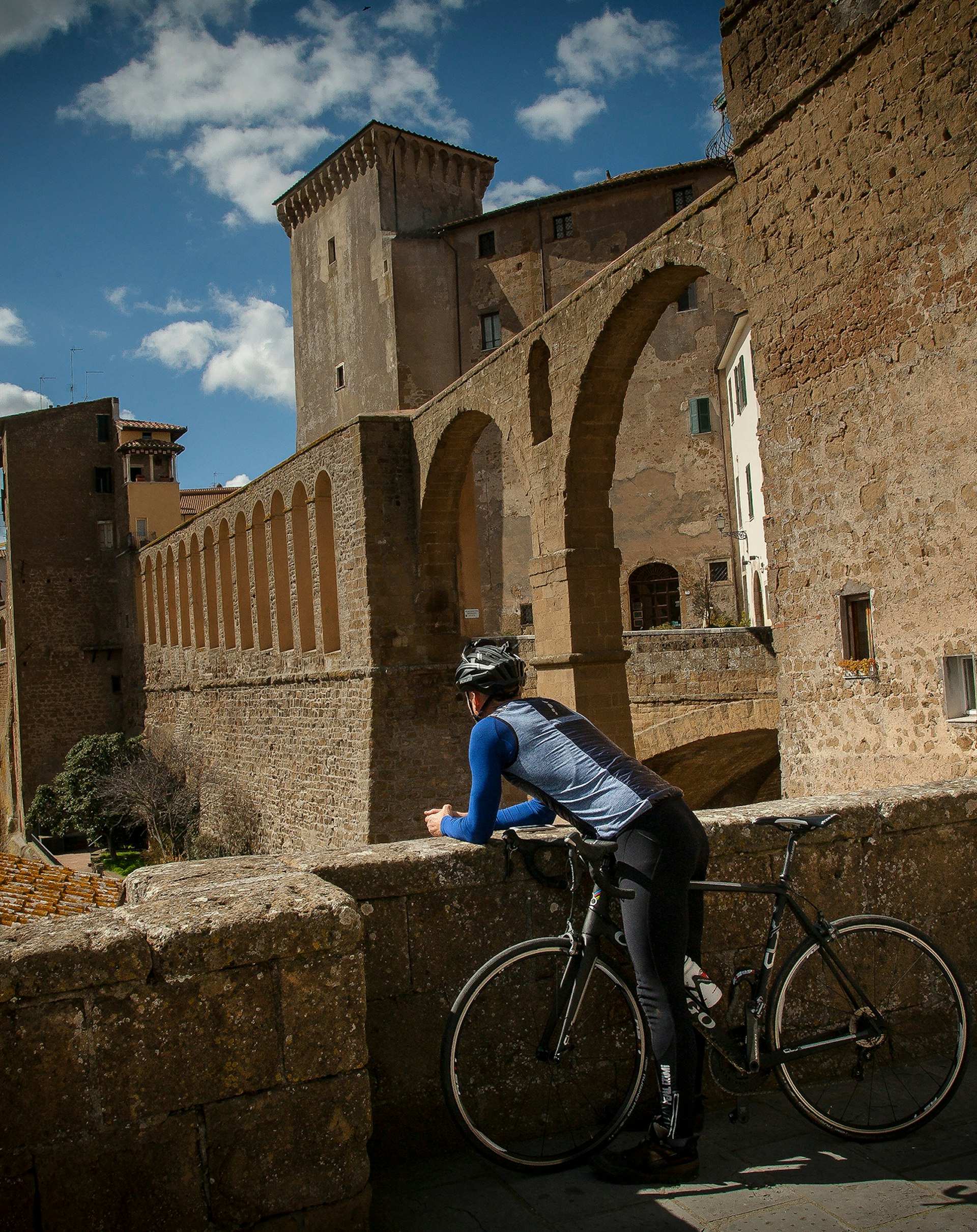
Early sightings of Pitigliano perched atop a towering volcanic outcrop are both inspiring and daunting, but the overwhelming need to see more keeps the pedals turning. Once inside town, you’re treated to an array of storied architecture: a beautiful 16th-century aqueduct, its arches dancing along the ramparts and down to precarious rock faces; sinuously curved staircases mysteriously climbing to and fro; some incredibly well preserved town gates and walls; and a Jewish museum and impressive synagogue dating back to 1598. Another remnant of the once considerable Jewish population here is its influence in the local cuisine.
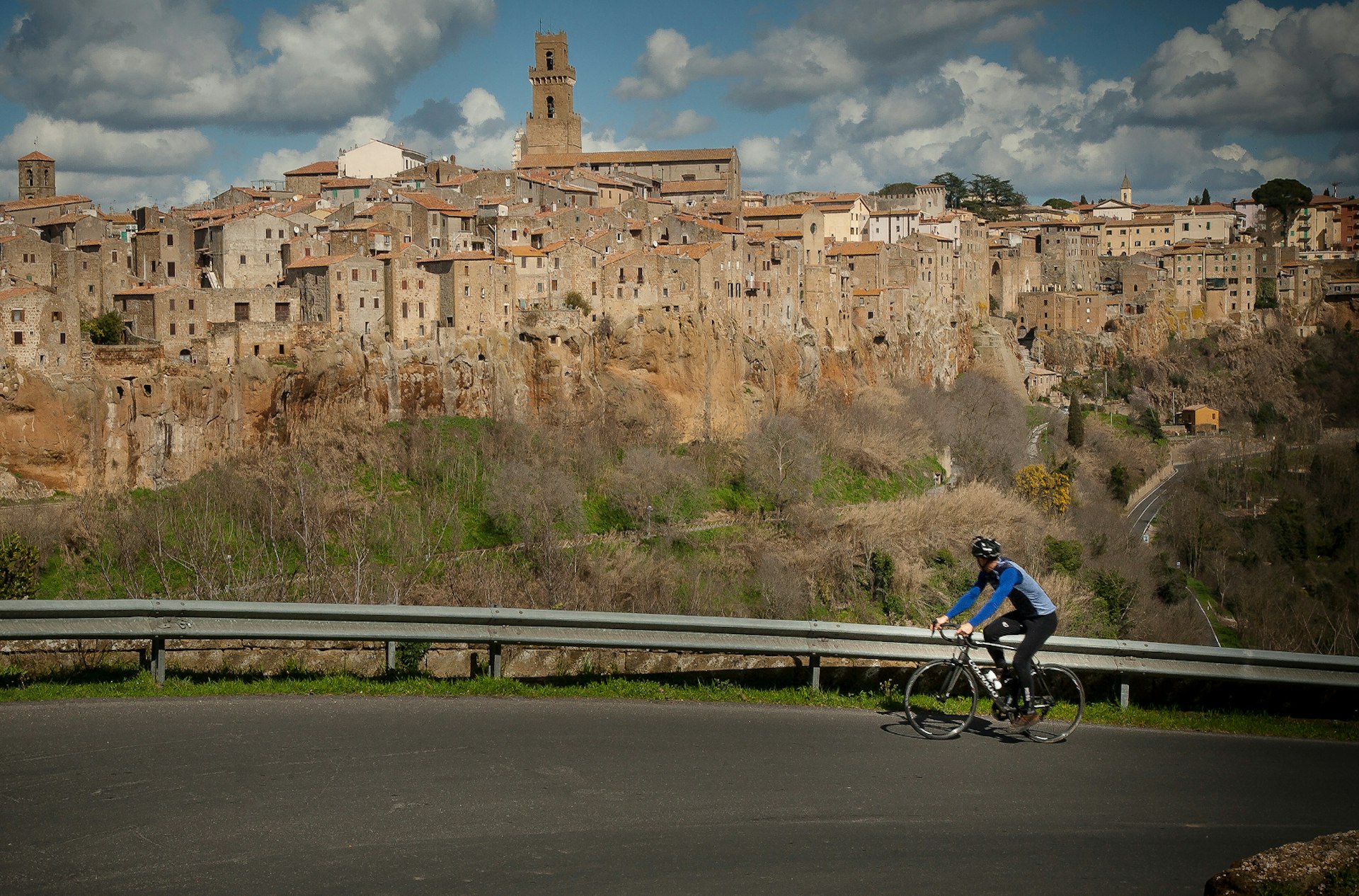
Leaving Pitigliano is a slow process, mostly due to the need to stop and take photographs of it from the opposite side of the gorge. It’s worth making the climb south along the SR74 to the first switchback, where the view can only be called stupendous. From here make a 180 and head north back towards your day’s starting point or pop back to Pitigliano for a meal and well-deserved night’s rest.
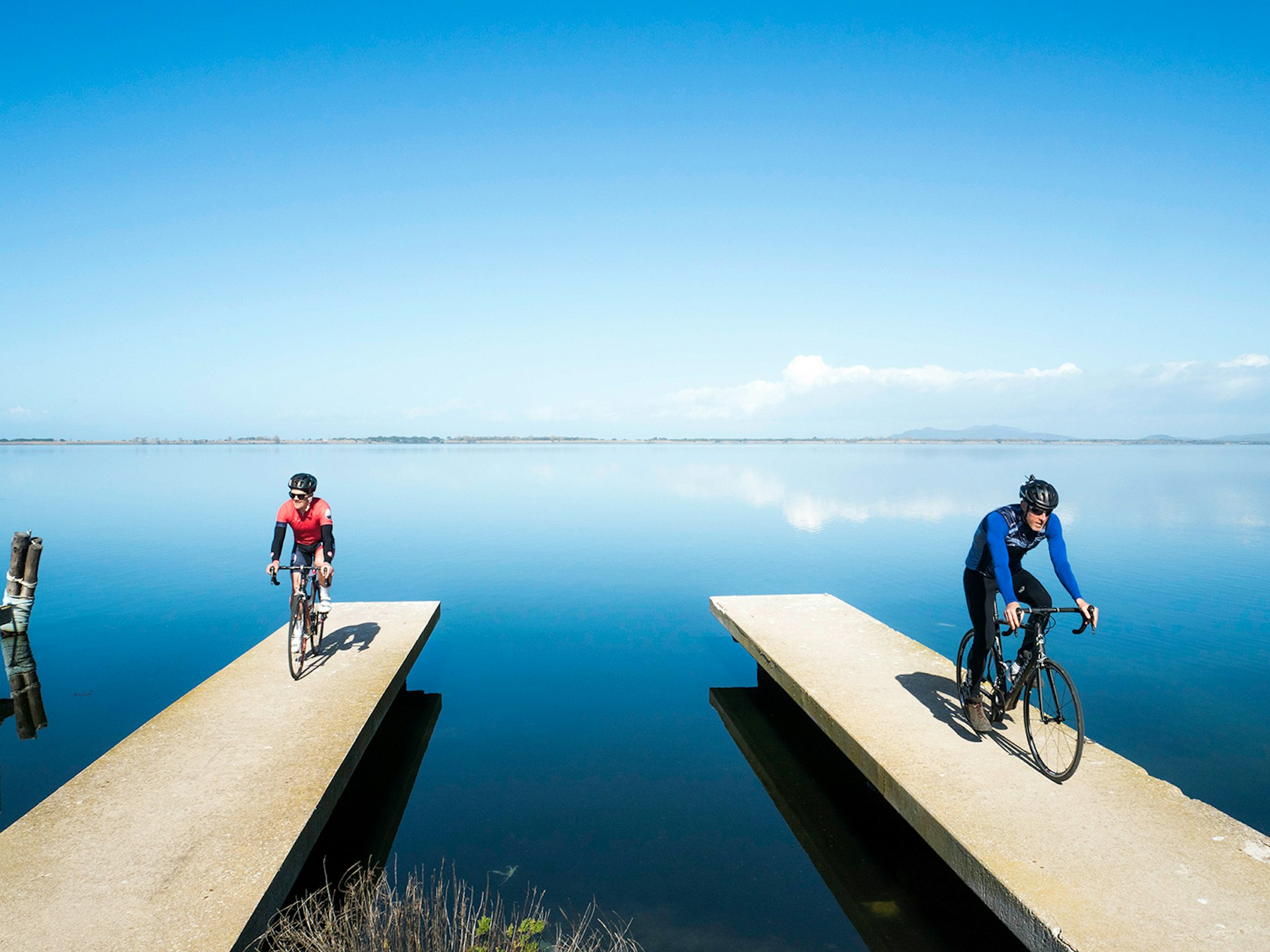
The Costa d’Argento: Orbetello & Capalbio
This 69km coastal loop takes in stunning coastal scenery, winds you through serene forests and still gets your heart rushing while climbing to the splendid hilltop village of Capalbio. Although 20km longer than the Città del Tufo itinerary above, the Costa d’Argento is less demanding due to far fewer hills.
Starting (and finishing) at Orbetello’s train station, this route’s access couldn’t be any easier. Located on a narrow isthmus jutting into its eponymously named lagoon, the town itself is rather laidback and low-key. Pedal west along town’s northern shore before crossing onto the rocky peninsula of Monte Argentario. The standard itinerary takes you immediately back across the southern side of the lagoon, but we’d strongly suggest making the detour up the western side of Forte Stella before looping back and descending along the jaw-dropping section of coastal road overlooking the island of L'Isolotto all the way down to the colourful harbour of Porto Ercole's old town. From there, follow the coast onto the heavily forested isthmus that separates the Mediterranean from the southern side of the Orbetello lagoon. The nicest way to cross this long, narrow section of land is to get off the road and cycle the smooth dirt trail in the forest that backs Playa del Can.
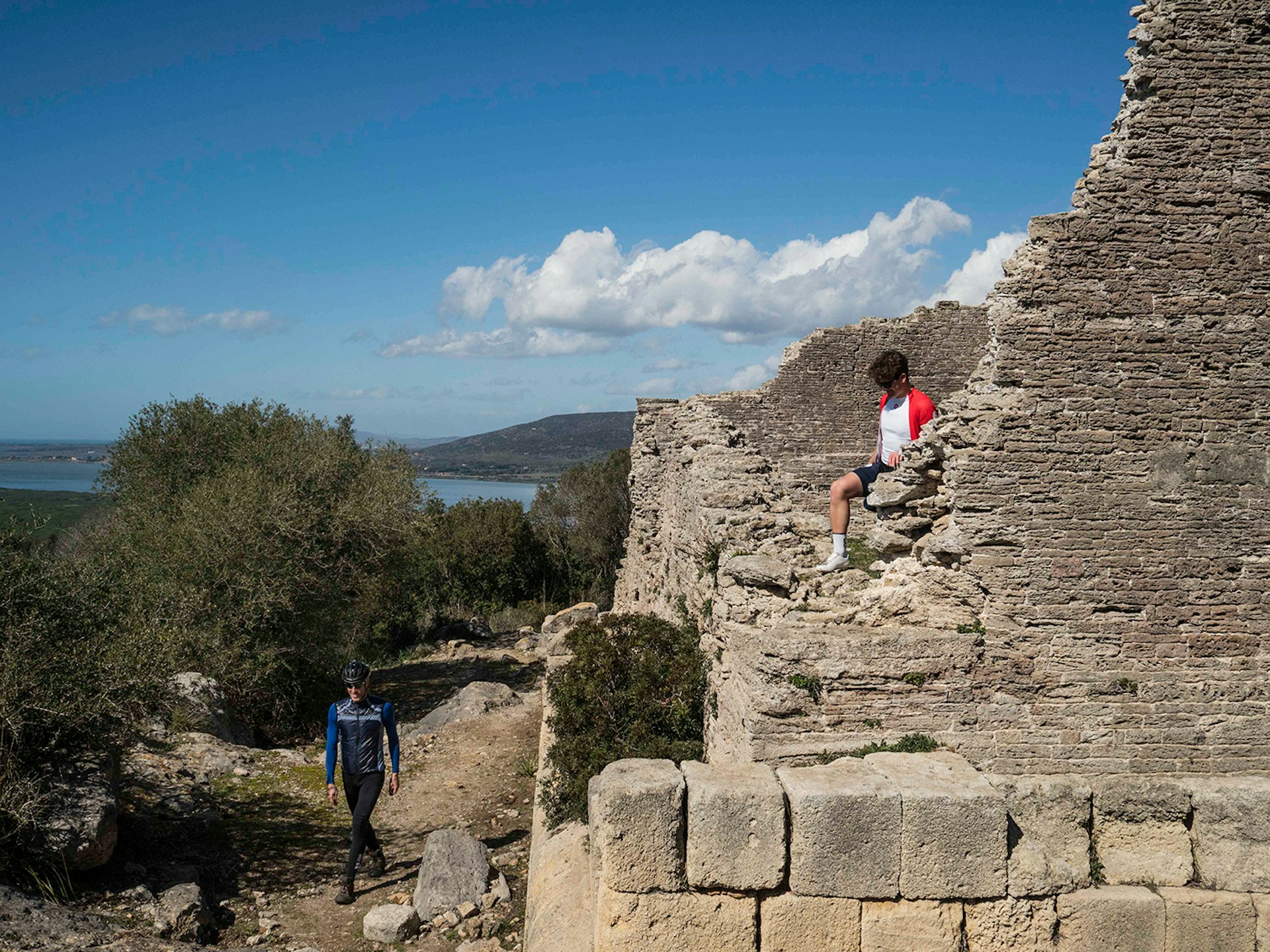
History calls, this time pulling you up to the summit of the nearby Ansedonia hillock – the site of an archaeological park protecting the ruins of the Roman city of Cosa. After exploring the site, its petite museum and the sweeping views over the lagoon and coast, descend on your bike northwards.
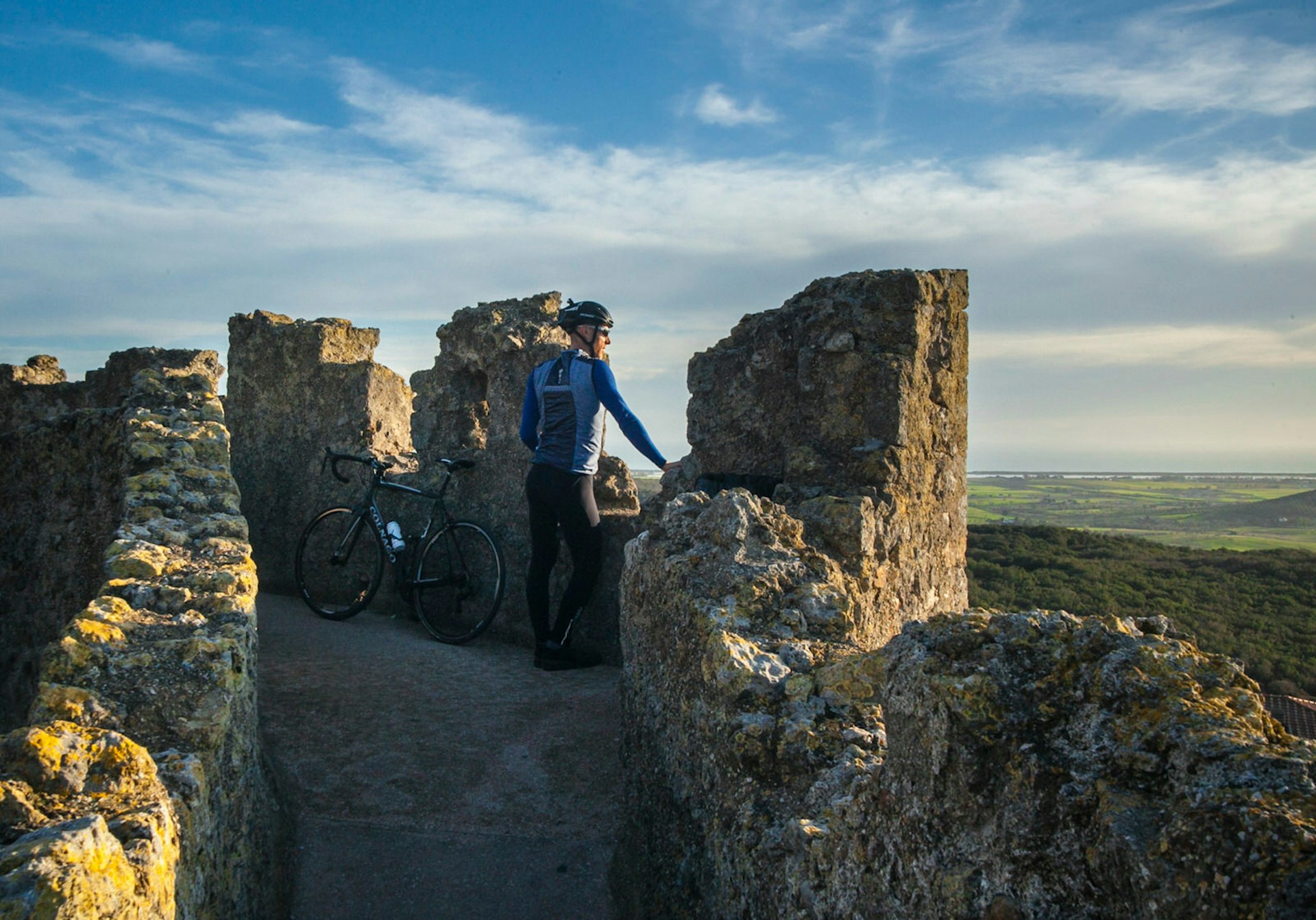
By now you’ll have seen the lofty village of Capalbio beckoning ahead, and now is the time to make your ascent there. It’s the first substantial climb of the day, and after a flat stretch along SP Pedemontana, you’ll head up the switchbacks of SP Capalbio. There are a couple of extremely steep sections once inside the walls of the village, but keep pushing until you reach the courtyard with steps up to the top of the ramparts. Take your time catching your breath once you’ve reached the top, as you’ll have plenty to look at – vistas stretch over the green fields to the distant Costa d’Argento.

After a well-earned meal in Capalbio, roll eastwards towards Pescia Fiorentina then turn south for the coast. At Chiarone Scalo you’ll find a seemingly endless stretch of beach – it’s the perfect place to lose your shoes and dip your feet in the sea. It’s now a relatively flat route back to your starting point in Orbetello via the coastal road.
Matt Phillips travelled with support from Visit Tuscany. Lonely Planet contributors do not accept freebies in exchange for positive coverage.
